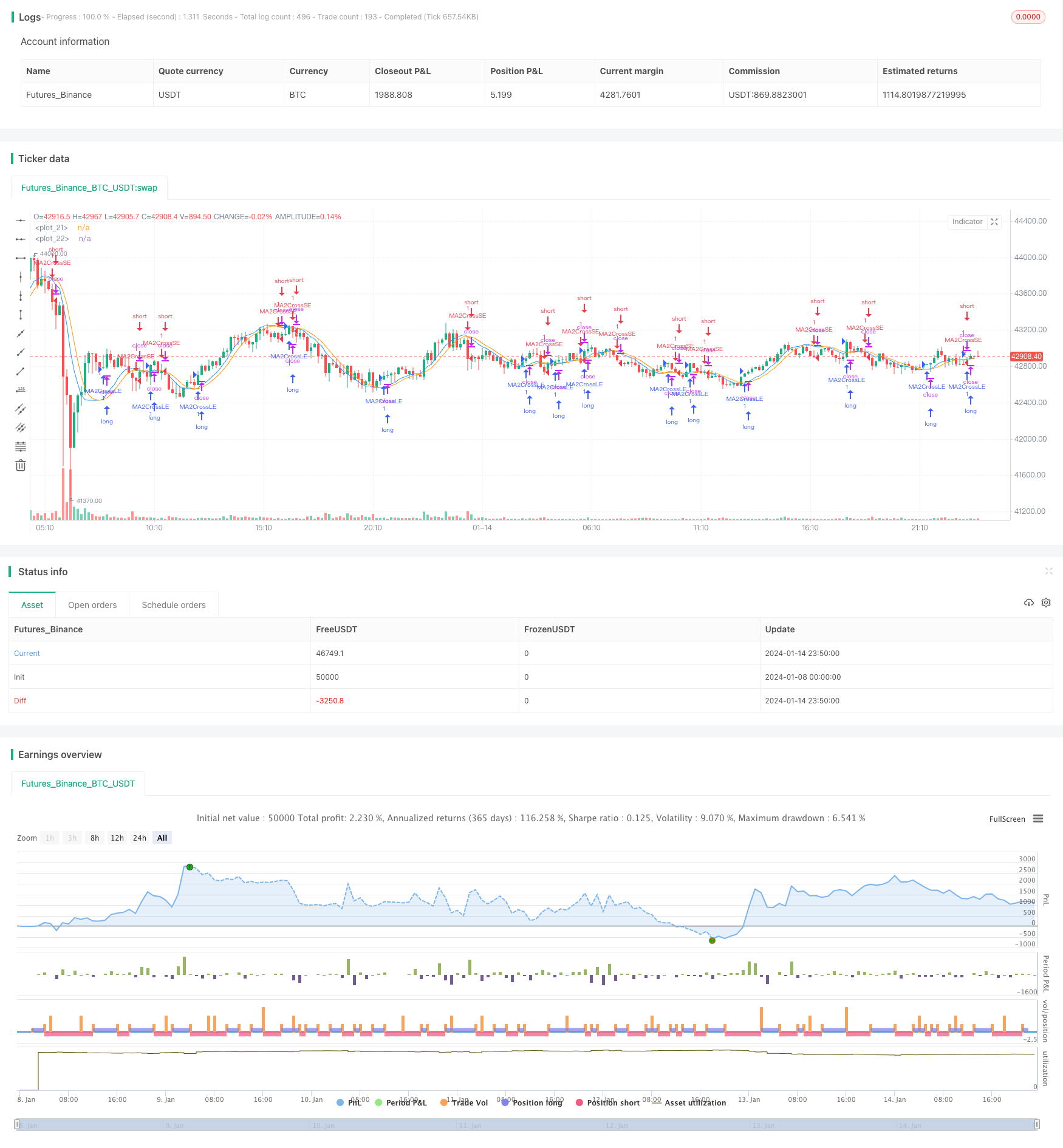
概述
该策略通过计算不同周期的移动平均线,并判断它们的金叉死叉形成交易信号,属于典型的趋势跟踪策略。主要使用了加权移动平均线WMA和自适应移动平均线ALMA。
策略原理
该策略首先计算价格的中短期移动平均线ma1和ma2,其中ma1周期更短,ma2周期更长。然后计算ma1和ma2的差值ma3,再对ma3计算出平滑移动平均线ma4。当ma3上穿ma4时产生买入信号,下穿时产生卖出信号。
这样,ma3反映价格的中短期趋势方向,ma4过滤掉ma3中的部分噪音,形成较为可靠的交易信号。ma1和ma2的周期比通过参数maLen设定,用户可以根据不同市场调整周期得到最佳参数组合。
策略优势
该策略具有以下优势:
使用自适应移动平均线ALMA和加权移动平均线WMA,能更好地适应市场变化。
应用多周期价格平均的方法,使交易信号更加可靠。
参数可调,用户可以针对不同市场进行优化,适用面广。
策略思路清晰易懂,容易实施。
可在趋势型和震荡型市场中均获得不错效果。
风险及解决
该策略也存在一些风险:
在剧烈变动的行情中,移动平均线策略容易产生交易信号不明确、延迟等问题。可通过调整移动平均线周期及参数进行优化。
纯趋势跟踪策略,在震荡盘整阶段容易产生亏损。可结合其他指标作为过滤条件。
参数设置不当可能导致超短周期而出现过度交易。应谨慎选择合适的参数。
策略优化
该策略可从以下几个方面进行优化:
测试更多类型的移动平均线,如线性移动平均线、权重移动平均线等。
增加基于波动率、价格通道等指标的止损机制。
结合多个时间周期分析,采取滚动优化参数。
增加机器学习算法,实现参数的自动优化。
总结
本策略基于移动平均线的金叉死叉形成交易信号。应用自适应移动平均线和多时间周期价格平均,使信号更加精确可靠。该策略参数可调,适用面广,思路简单清晰,在趋势市场中效果较好,具有很高的实战价值。
策略源码
/*backtest
start: 2024-01-08 00:00:00
end: 2024-01-15 00:00:00
period: 10m
basePeriod: 1m
exchanges: [{"eid":"Futures_Binance","currency":"BTC_USDT"}]
*/
//@version=3
strategy("Oracle Move Strategy", overlay=true)
maLen = input(30, "ma period")
mode = input(defval="wma", options=["alma", "ema", "wma"])
price = close
ma(src, len) =>
mode=="alma" ? alma(src, len, 0.85, 6) :
mode=="ema"? ema(src, len) :
wma(src, len)
ma1 = ma(price, floor(maLen / 2))
ma2 = ma(price, maLen)
ma3 = 2.0 * ma1 - ma2
ma4 = ma(ma3, floor(sqrt(maLen)))
//plot(ma1, color = red)
//plot(ma2, color = green)
plot(ma3, color = blue)
plot(ma4, color = orange)
mafast = ma3
maslow = ma4
if (crossover(mafast, maslow))
strategy.entry("MA2CrossLE", strategy.long, comment="MA2CrossLE")
if (crossunder(mafast, maslow))
strategy.entry("MA2CrossSE", strategy.short, comment="MA2CrossSE")
//plot(strategy.equity, title="equity", color=red, linewidth=2, style=areabr)